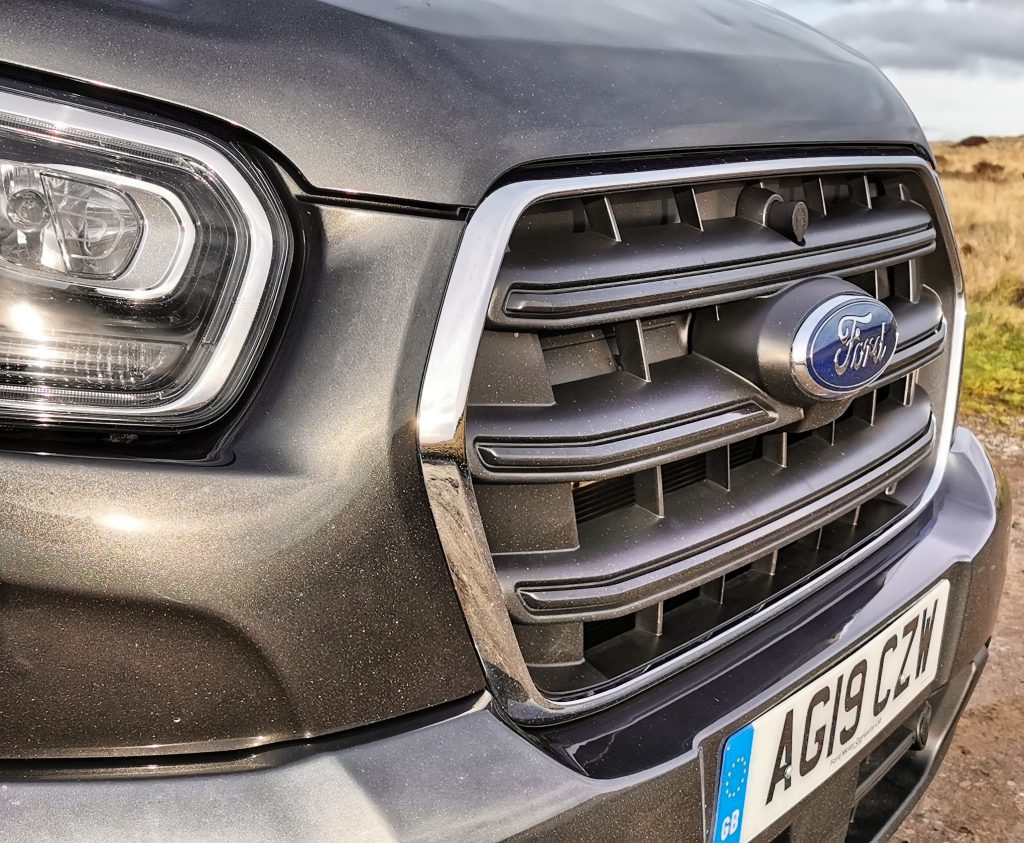Road Test and Review – Ford Transit 350 L3H2 Limited 185PS (2019MY)
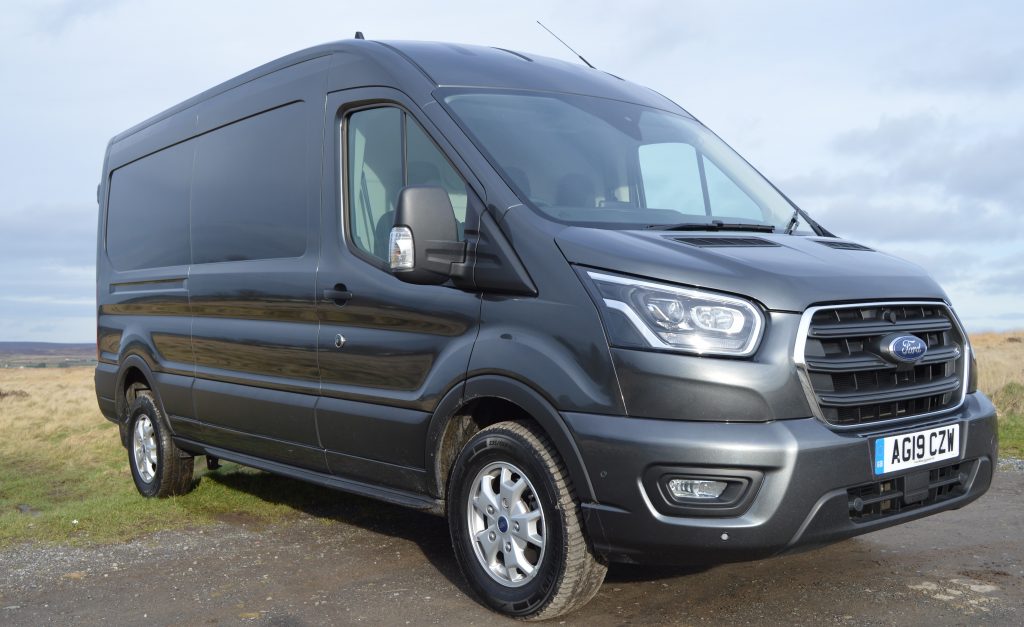
As advances in technology march on at an unprecedented pace, van manufacturers are constantly developing new features to remain competitive, and the availability of this tech is often wrapped within a general facelift.
The ‘big’ Ford Transit has recently had a makeover which not only adds some new features for the driver, but also brings a fresh look to the front of the van, with a new 3 bar grill and redesigned bumper and lower panel. The bonnet is now manufactured from aluminium offering a weight saving, and, with other subtle changes Ford is claiming an increased payload of up to 80kg on rear wheel drive models.
The 2.0 litre ‘EcoBlue’ engines have been updated too. New pistons and a redesigned fuel injection system give greater efficiency with a claimed improvement in fuel consumption of up to 7%. Electric power steering has also been introduced.
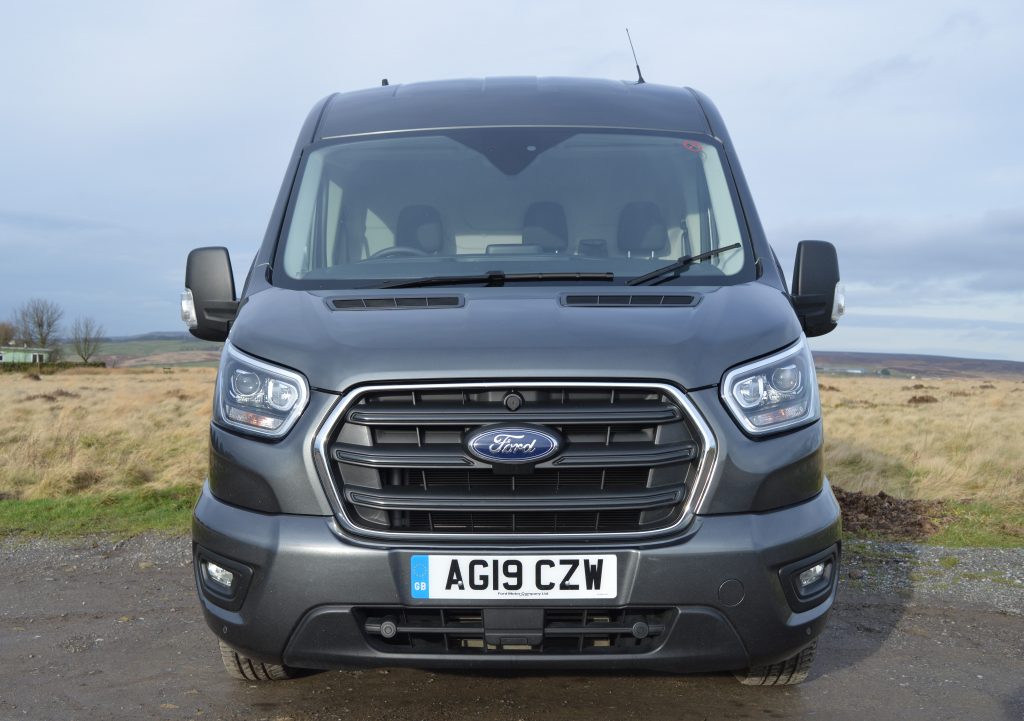
Specification and features
Our test van was an L3H2 (long wheelbase, medium roof in old money) model in the range topping Limited trim level, and also with the most powerful engine in the range, pumping out a hefty 185PS. At this trim point, you’ll get alloy wheels (not too sure about the suitability and practicality of these on a large van), Bi-Xenon headlights and LED DRL’s, front and rear parking sensors, air conditioning, heated screen, cruise control and Ford’s SYNC3 multimedia unit with an 8” screen.
Various drive modes are manually selectable for different terrain and surfaces, called Normal, Slippery and Eco. Ford are also including the FordPass Connect feature, offering passengers a WiFi hotspot, and remote monitoring of the vehicle for fleet managers using a smartphone app.
Safety and driver assistance features are plentiful, with Traffic Sign Assist, Pre-Collision Assist, Pedestrian Detection and Lane Keeping Assistance all fitted as either standard or as options.
The cab environment
The first thing a regular Transit driver will notice is that the van has gained a new dashboard. Gone is the old centre console which was a familiar feature across the car and LCV range, and the dash is dominated by the centrally mounted SYNC3 screen. There is plenty of storage available, including trays on top of the facia with USB and 12 volt power sockets. There is also an overhead storage facility, although not huge will provide valuable space for some smaller items. There is a definite overall improvement in the quality, finish and design of the cab compared to the old model.
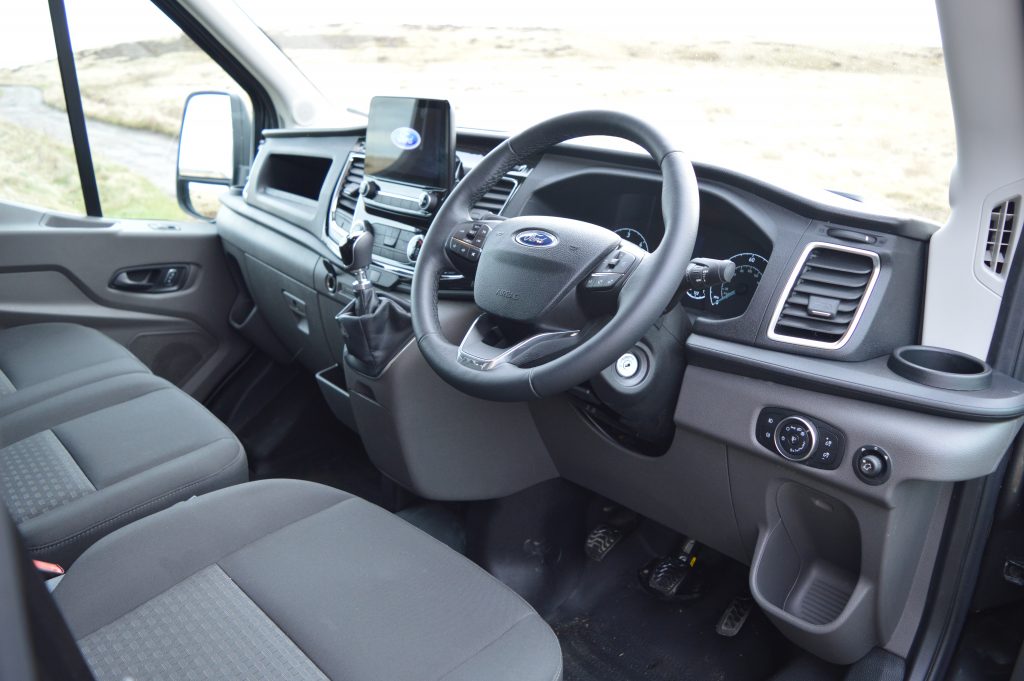
Whilst the SYNC3 screen is very clear and easy to operate (and the inclusion of Android Auto proved to be a boon as the van did not come with the optional satellite navigation), as it is centre mounted and faces to the rear without any sideways angle, in a large cab it does take a definite turn of the head to view whilst driving.
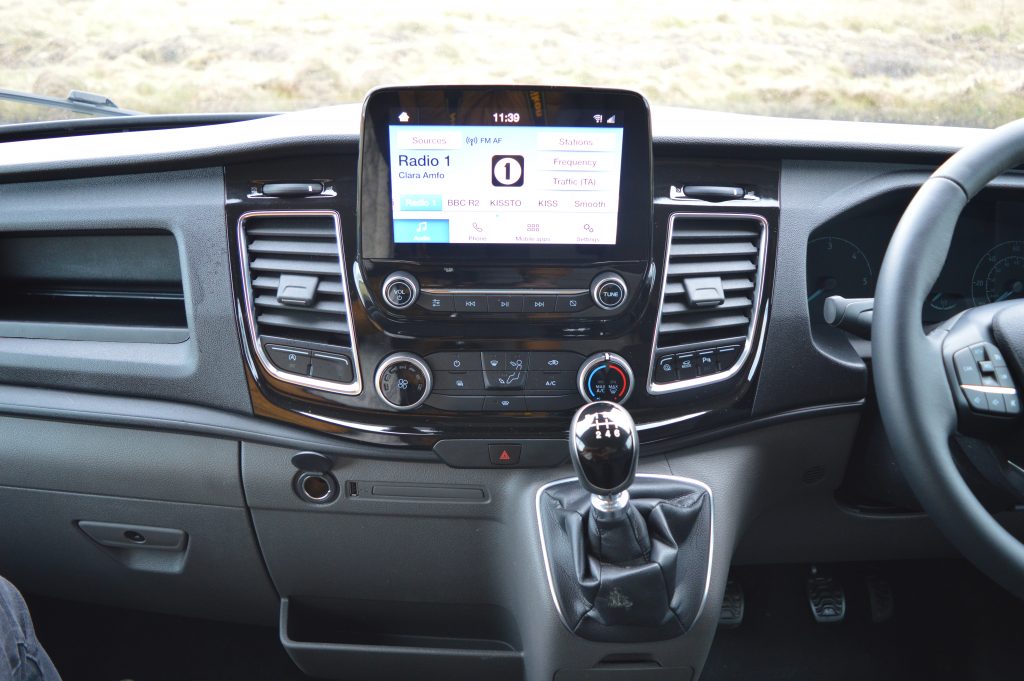
Load area
This is unchanged compared to the previous Transit, with the standard bulkhead and load lashing eyes being retained. Unfortunately, even at this trim level, the manufacturer has shaved off a few pounds in the cost of building the van by not taking the opportunity to include LED lighting in the loadbay area, a huge omission and something an operator will have to live with on a day to day basis unless he pays for the optional upgrade.
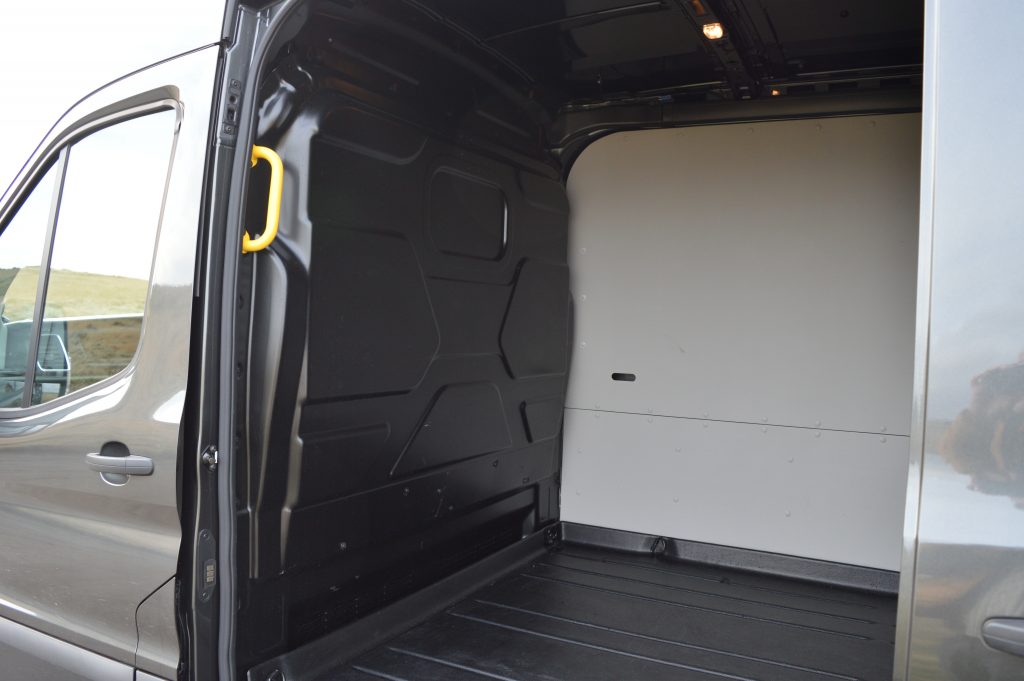
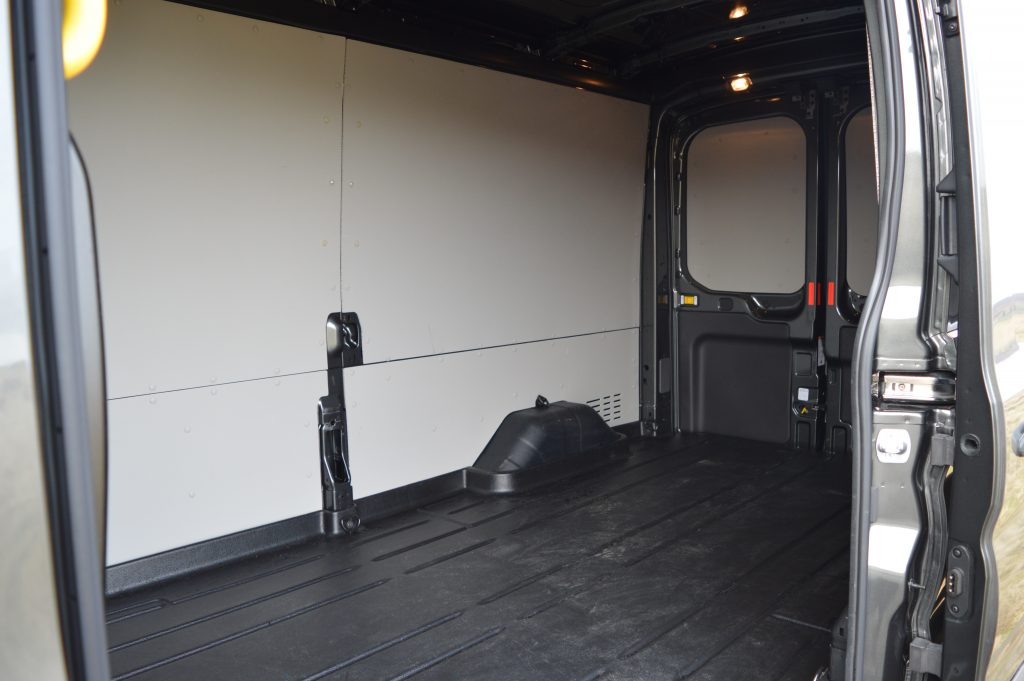
On the road
The efficient 185PS engine, as, one would expect ensures that you’re never without a reserve of power. It’s quiet, oozes torque at lower revs and the van returned just over 30mpg in the week we had it, the majority of driving being high speed motorway use. The electric power steering is an absolute pleasure around town, providing a well balanced feel and light operation. Albeit tested unladen, the van handled and rode perfectly and, on one drive of over 200 miles without a break, the driver arrived at his destination as fresh as if he had travelled in a decent passenger car. The Transit boasts excellent build quality inside and out and has an air of refinement which is difficult to define.
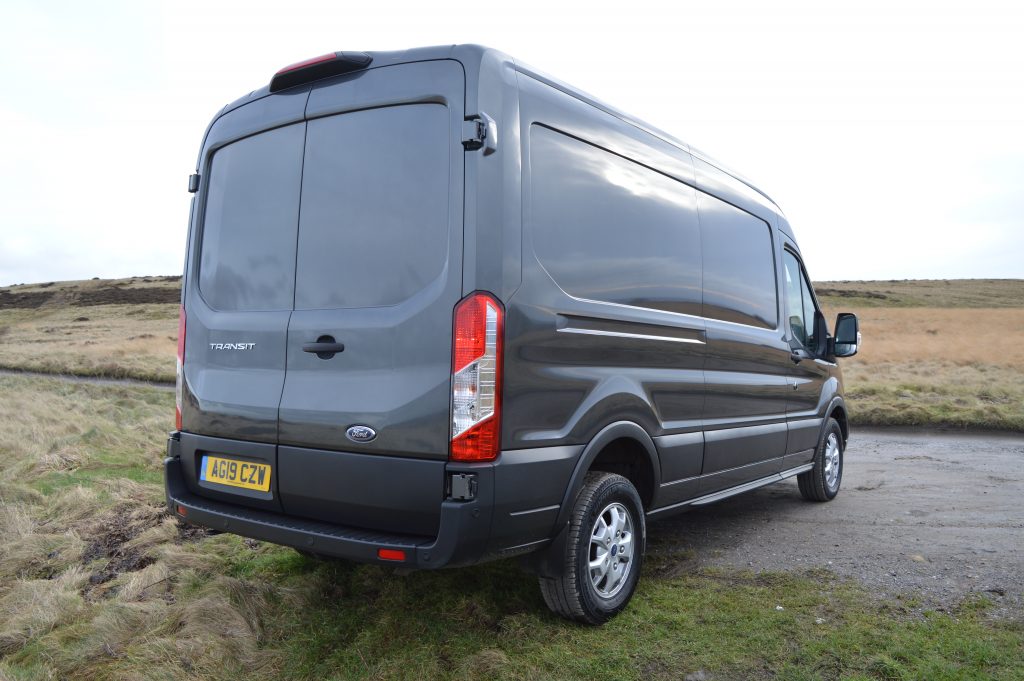
Conclusion
The Ford Transit and Mercedes –Benz Sprinter ended 2019 with very similar sales figures. These are currently the two main contenders in the 3.5 tonne GVW sector and are battling it out for supremacy with the regular addition of new features and technology.
This is an excellent ‘mid cycle’ makeover from Ford, and puts them on a level playing field once again with Mercedes-Benz who refreshed the Sprinter in 2018. The winners with this sort of competition are the customers, who benefit from more efficient and technically advanced vehicles on a constant basis – the lines between the passenger car and van worlds are becoming less distinct with commercial vehicles no longer the poor relation…
